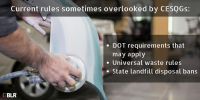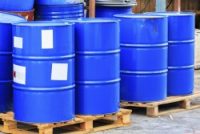Hazardous Waste Generator Rule Changes Finalized
As frequent visitors to EPA’s Resource Conservation and Recovery Act (RCRA) Online database already know, the Agency’s hazardous waste regulations prompt a constant stream of questions from both regulated entities and RCRA-authorized states about applicability, lack of clarity, and regulatory gaps. A small fraction of EPA’s answers and interpretations responding to such questions have now […]










